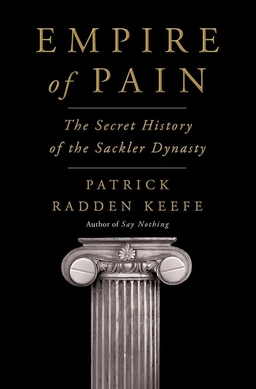
Oxycodone, sold under various brand names such as Roxicodone and OxyContin, is a semi-synthetic opioid used medically for treatment of moderate to severe pain. It is highly addictive and is a commonly abused drug. It is usually taken by mouth, and is available in immediate-release and controlled-release formulations. Onset of pain relief typically begins within fifteen minutes and lasts for up to six hours with the immediate-release formulation. In the United Kingdom, it is available by injection. Combination products are also available with paracetamol (acetaminophen), ibuprofen, naloxone, naltrexone, and aspirin.

Extended-releaseformulations of morphine are those whose effect last substantially longer than bare morphine, availing for e.g. one administration per day. Conversion between extended-release and immediate-release morphine is easier than conversion to or from an equianalgesic dose of another opioid with different half-life, with less risk of altered pharmacodynamics.

Arthur Mitchell Sackler was an American psychiatrist and marketer of pharmaceuticals whose fortune originated in medical advertising and trade publications. He was also an art collector. He was one of the three patriarchs of the controversial Sackler family pharmaceutical dynasty.

Purdue Pharma L.P., formerly the Purdue Frederick Company (1892–2019), was an American privately held pharmaceutical company founded by John Purdue Gray. It was sold to Arthur, Mortimer and Raymond Sackler in 1952, and then owned principally by the Sackler family, and their descendants.
Raymond Sackler was an American physician and businessman. He acquired Purdue Pharma together with his brothers Arthur M. Sackler and Mortimer Sackler. Purdue Pharma is the developer of OxyContin, the drug at the center of the opioid epidemic in the United States.

Mallinckrodt Pharmaceuticals is an American-Irish domiciled manufacturer of specialty pharmaceuticals, generic drugs and imaging agents. In 2017 it generated 90% of its sales from the U.S. healthcare system. While Mallinckrodt is headquartered in Ireland for tax purposes, its operational headquarters are in the U.S. Mallinckrodt's 2013 tax inversion to Ireland drew controversy when it was shown Acthar was Medicaid's most expensive drug.
Mortimer David Sackler was an American-born British psychiatrist and entrepreneur who was a co-owner, with his brother Raymond, of Purdue Pharma. During his lifetime, Sackler's philanthropy included donations to the Metropolitan Museum of Art, the Tate Gallery, the Royal College of Art, the Louvre and Berlin's Jewish Museum.

Elizabeth Ann Sackler is a public historian, arts activist, and the daughter of Arthur M. Sackler; as such, she is a member of the Sackler family. She is the founder of the American Indian Ritual Object Repatriation Foundation and the Elizabeth A. Sackler Center for Feminist Art at the Brooklyn Museum.

Richard Stephen Sackler is an American billionaire businessman and physician who was the chairman and president of Purdue Pharma, a former company best known as the developer of OxyContin, whose connection to the opioid epidemic in the United States was the subject of multiple lawsuits and fines, and that filed for bankruptcy in 2019. It has been claimed that Richard Sackler's Purdue is among ”the worst drug dealers in history” and the Sackler family have been described as the "most evil family in America". The company's downfall was the subject of the 2021 Hulu series Dopesick and the 2023 Netflix series Painkiller.
Massachusetts v. Purdue is a lawsuit filed on August 14, 2018, suing the Stamford, Connecticut-based company Purdue Pharma LP, which created and manufactures OxyContin, "one of the most widely used and prescribed opioid drugs on the market", and Purdue's owners, the Sacklers accusing them of "widespread fraud and deception in the marketing of opioids, and contributing to the opioid crisis, the nationwide epidemic that has killed thousands." Purdue denied the allegations.
Barry Meier is a writer and former New York Times journalist who wrote the 2003 non-fiction book Pain Killer: A Wonder Drug's Trail of Addiction and Death. His articles "have led to Congressional hearings and changes in federal laws".
The Sackler family is an American family who owned the pharmaceutical company Purdue Pharma and later founded Mundipharma. Purdue Pharma, and some members of the family, have faced lawsuits regarding overprescription of addictive pharmaceutical drugs, including OxyContin. Purdue Pharma has been criticized for its role in the opioid epidemic in the United States. They have been described as the "most evil family in America", and "the worst drug dealers in history".
P.A.I.N. is an advocacy organization founded by artist Nan Goldin to respond to the opioid crisis, specifically targeting the Sackler Family for manufacturing, promoting, and distributing the drug Oxycontin through their corporation Purdue Pharma LP.

The timeline of the opioid epidemic includes selected events related to the origins of Stamford, Connecticut-based Purdue Pharma, the Sackler family, the development and marketing of oxycodone, selected FDA activities related to the abuse and misuse of opioids, the recognition of the opioid epidemic, the social impact of the crisis, lawsuits against Purdue and the Sackler family.

Empire of Pain: The Secret History of the Sackler Dynasty is a 2021 book by Patrick Radden Keefe. The book examines the history of the Sackler family, including the founding of Purdue Pharma, their role in the marketing of pharmaceuticals, and the family's central role in the opioid epidemic. The book followed Keefe's 2017 article on the Sackler family in The New Yorker, titled The Family That Built an Empire of Pain.

The Crime of the Century is an American two-part documentary film, directed, produced, and written by Alex Gibney. The film follows the opioid epidemic in the United States, and the political operatives, government regulations and corporations that enable the abuse of opioids, particularly the Sackler family and Purdue Pharma.
Joss Sackler is a fashion designer. She is also known for her marriage to David Sackler, whose father Richard Sackler was the chairman and president of Purdue Pharma, and oversaw its manufacturing of the highly addictive opioid Oxycontin a leading drug in the opioid epidemic.
Curtis Wright IV is an American former government official known for his role in the Food and Drug Administration's approval of OxyContin for Purdue Pharma in 1995, followed by his subsequent employment by the company, which led to portrayals in films and reports in nonfiction books, magazines, and news media outlets of his alleged role as one of the key figures in the current opioid epidemic in the United States. Wright was implicated in a criminal conspiracy outlined in a 2006 United States Department of Justice review document that was first made public in Purdue Pharma's 2019 bankruptcy proceedings. Although that case was settled in a 2007 plea agreement deal, members of United States Congress have requested the full 2006 documentation from the Department of Justice with the goal of opening a new case based upon the evidence then gathered. Parts of Wright's sworn depositions in 2003 and 2018 have internal contradictions and differ from documentary evidence described the 2003–2006 U.S. Federal Government investigation into Purdue Pharma.












